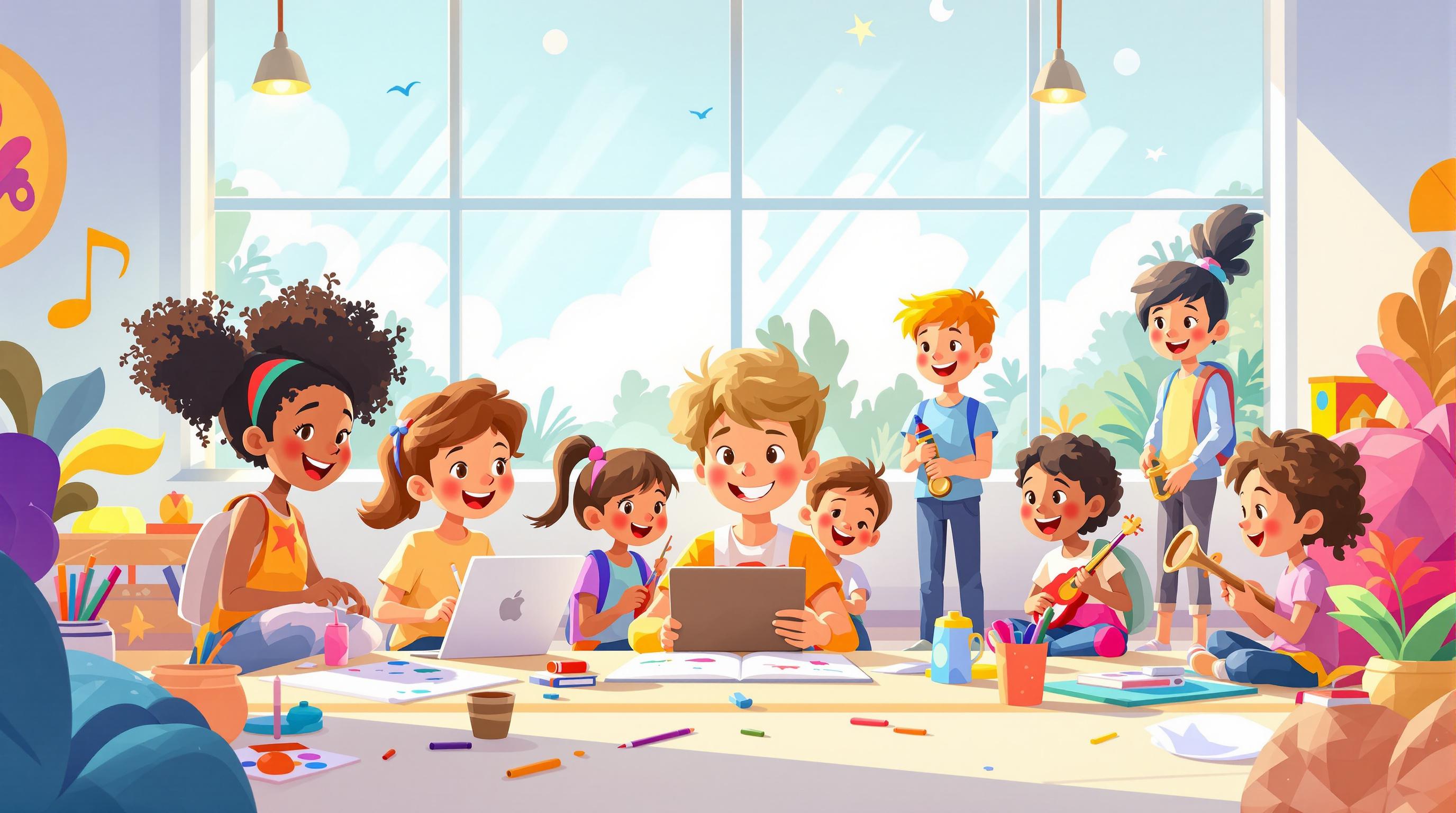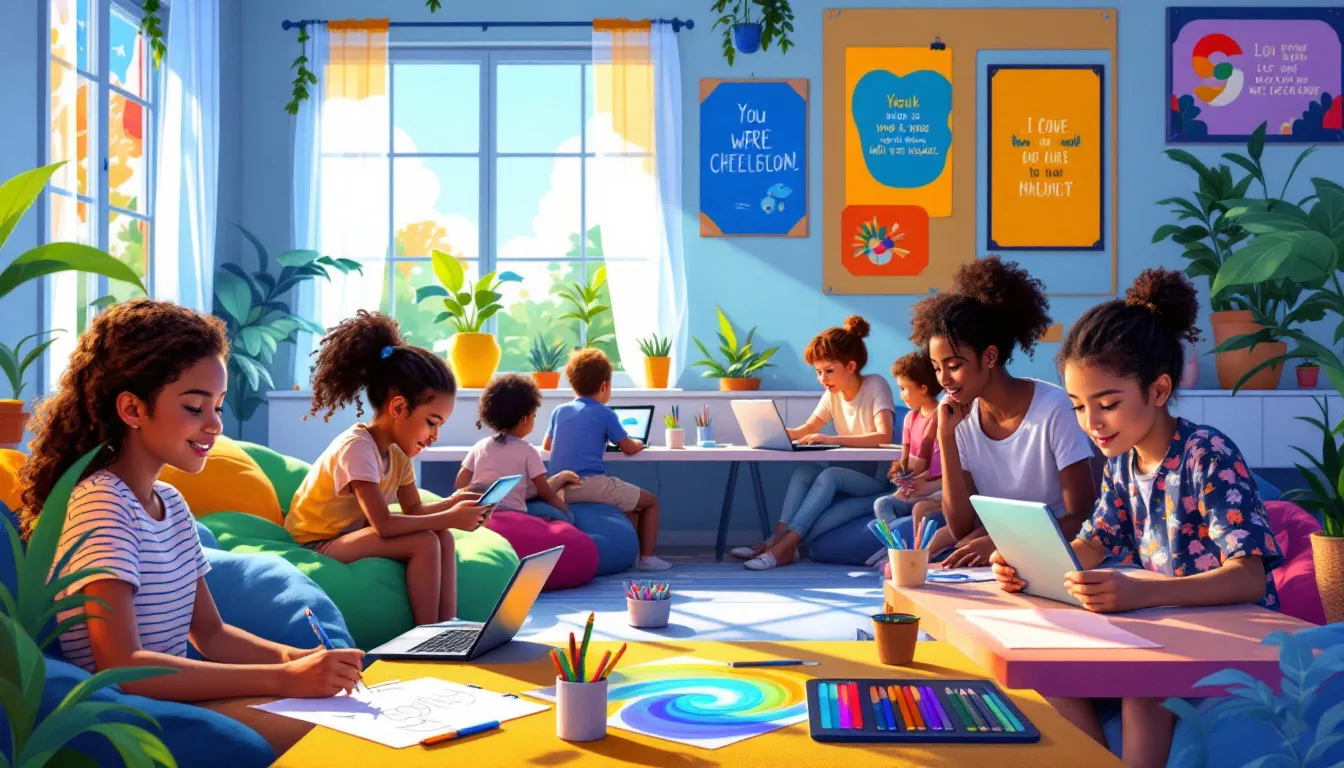Parental controls are essential for homeschooling families navigating the digital world. They help protect kids from inappropriate content, minimize distractions, and create a focused learning environment. Here's what you need to know:
-
Key Features:
- Content Filtering: Blocks harmful websites.
- Time Management: Sets study schedules.
- Activity Monitoring: Tracks progress and behavior.
- Access Control: Limits non-educational content.
-
Types of Controls:
- Device-Level: Tools like iOS Screen Time and Android Digital Wellbeing.
- Router-Level: Network-wide content filtering (e.g., OpenDNS).
- App-Based: Built-in controls in platforms like Khan Academy and Duolingo.
- Top Tools:
Pro Tip: Combine these tools with open conversations about online safety to create a secure and productive learning space.
What is the best parental control app? Full app comparisons
Different Types of Parental Controls and How They Work
Parental controls come in various forms, helping you create a safe and productive digital learning environment for your homeschooled children.
Parental Controls on Devices
Many devices, like smartphones and laptops, come with built-in tools to manage screen time and app usage. For example:
- iOS: Features like Screen Time allow you to set app usage limits and schedule downtime.
- Android: Digital Wellbeing tracks device usage and includes Focus Mode to minimize distractions.
- Computers: Family Safety tools help filter content and manage screen time effectively.
These device-specific controls are great for focused management. However, for broader protection across multiple devices, router-level settings are a better option.
Internet and Router Settings for Parental Controls
Router-level tools, such as OpenDNS, allow you to filter harmful content across your entire network. This ensures that every device connected to your Wi-Fi is automatically protected, providing a consistent layer of safety.
If you’re looking for more personalized options, many apps and platforms also include built-in parental control features designed for educational support.
Parental Controls in Apps and Platforms
Educational apps often include parental controls to help parents guide and monitor their child’s learning. For example, platforms like Khan Academy and Duolingo offer tools to track progress and limit features, ensuring that children stay focused and engaged.
| Platform | Control Features | Learning Benefits |
|---|---|---|
| Khan Academy | Progress tracking, content limits | Helps maintain a focused learning path and ensures appropriate difficulty levels. |
| Duolingo | Activity monitoring, feature limits | Supports structured language learning and tracks engagement. |
| Other Apps | Custom restrictions, time limits | Allows for progress monitoring and skill development. |
Keeping these controls updated ensures they remain effective and aligned with your homeschooling objectives.
Tips for Using Parental Controls Effectively
Using parental controls effectively means combining tech tools with open communication and education. Here's how you can make these tools work while supporting your child's homeschooling experience.
Talking to Your Children About Parental Controls
Present parental controls as tools for learning rather than restrictions. Use age-appropriate language to explain their purpose, involve your kids in creating boundaries, and revisit the rules together to build trust and encourage collaboration.
| Communication Aspect | Approach | Expected Outcome |
|---|---|---|
| Initial Discussion | Explain the purpose and how it helps | Better understanding and cooperation |
| Rule Setting | Work together to set boundaries | Greater sense of ownership and responsibility |
| Regular Check-ins | Adjust controls as needed together | Builds trust and ensures compliance |
When your kids understand the purpose behind these controls, it’s easier to keep them engaged and ensure the settings stay relevant as they grow.
Reviewing and Updating Parental Control Settings
Keep your parental controls up to date by regularly reviewing device and platform settings. Focus on:
- Adjusting content filters to fit academic needs
- Setting time limits that align with learning schedules
- Managing app and website permissions for educational access
- Modifying safety features as kids show responsible online habits
Teaching Kids About Online Safety
Parental controls are helpful, but teaching your kids online safety is key to helping them navigate the digital world independently. Show them how to think critically about online risks. They should know how to:
- Spot inappropriate content
- Protect their personal information
- Browse safely
- Reach out for help when something feels off
For more tips and resources tailored to safe online learning, check out Homeschool Directory's dedicated tools for creating secure digital environments.
sbb-itb-fb77983
Tools and Resources for Managing Online Learning
To manage online learning effectively, having the right tools and resources is essential. Below is an overview of solutions designed to help create a secure and productive homeschooling environment.
Homeschool Directory: A Hub for Homeschooling Families

Homeschool Directory serves as a central resource for homeschooling families. It offers a curated selection of curriculum materials, worksheets, and vetted online tools. Parents can also connect with community support to make digital learning safer and more effective.
While this directory provides a wide range of resources, pairing it with parental control software can help you better manage your child’s online learning experience.
Recommended Parental Control Software for Homeschooling
Here are three parental control tools that can help you monitor and manage your child's online activities:
| Software | Key Features | Best For | Monthly Cost |
|---|---|---|---|
| Qustodio | Monitors multiple devices, detailed reports, social media tracking | Managing multiple devices | $4.58 |
| Bark | Smart threat detection, real-time alerts for harmful content | Proactive safety | $14.00 |
| Net Nanny | Custom filters, screen time tools, schedule management | Time management | $9.99 |
- Qustodio: Ideal for families with several children, Qustodio provides detailed activity reports and monitors multiple devices. It’s a great option for keeping an eye on screen time and online behavior.
- Bark: Bark’s smart technology detects potential threats and sends real-time alerts to parents. It’s an excellent choice for those focused on safety and staying ahead of risks.
- Net Nanny: Known for its customizable filters and time management tools, Net Nanny makes it easy to tailor settings to your child’s educational needs and daily schedule.
These tools can help you maintain a balance between online safety and productive learning.
Conclusion: Creating a Safe and Productive Online Learning Space
Building a secure and effective online learning environment takes a mix of smart parental controls and open conversations with your kids. The trick is balancing safety with freedom while nurturing trust.
Start with Open Communication
Parental controls work best when paired with clear, honest discussions. Explain these tools as a way to keep them safe and support their learning, which helps build mutual understanding and trust.
Adjust Settings as Needed
Customizable settings let you tailor controls to match your child’s age and learning needs. Regularly updating these settings ensures they stay relevant as your child grows and their educational goals evolve.
Encourage Digital Responsibility
Beyond just monitoring, tools like Homeschool Directory help kids develop skills like critical thinking and time management. They also teach them to spot potential online risks, creating a balance between safety and independence.
Technology as a Support Tool
Parental controls provide a solid safety net, but they’re most effective when combined with education and open dialogue. This approach helps create a responsible and secure online learning experience.
The goal isn’t just to block access but to create a space where kids can explore and learn safely. By using the right tools and keeping communication open, you can help your child thrive in the digital world.
FAQs
How can I block inappropriate content on devices?
You can block inappropriate content by setting up restrictions that match your child’s age and needs. This is especially helpful for homeschooling families balancing educational and recreational screen time. Here are some ways to secure devices:
- Device-level controls: Use content filters to block unsuitable material.
- Router settings: Apply filters that cover your entire network.
- Screen time tools: Manage usage and monitor activity.
- Real-time alerts: Get notifications for concerning behavior or content.
Combining device and router-level controls ensures better protection during online learning. Using the right parental control software can make this process smooth and effective for homeschooling setups.
What features should I prioritize in parental control software?
When picking parental control software, focus on features that support both education and safety. Here’s a quick breakdown:
| Feature | What It Does |
|---|---|
| Content Filtering | Blocks access to unsuitable websites using advanced filtering tools. |
| Time Management | Helps set study hours and break times to maintain a balanced schedule. |
| Multi-Device Support | Lets you manage restrictions across all devices your child uses. |
| Activity Reports | Offers insights into device usage and tracks learning progress. |
Once you’ve chosen software, make sure to update it regularly to keep it effective.
How often should I adjust parental control settings?
It’s a good idea to review and update settings every few months to match your child’s evolving needs. Consider factors like:
- Changes in academic requirements or curriculum.
- Your child’s growing digital responsibility.
- Shifts in learning patterns and study habits.
- New educational tools or online resources.
Regular updates ensure that the controls stay aligned with your child’s educational and developmental goals.


